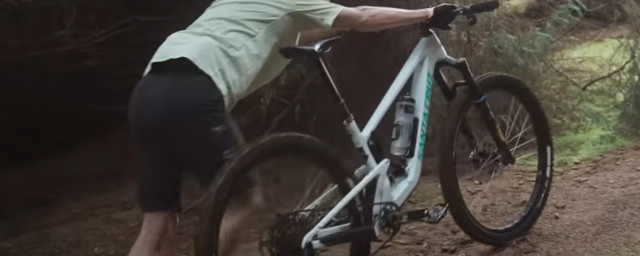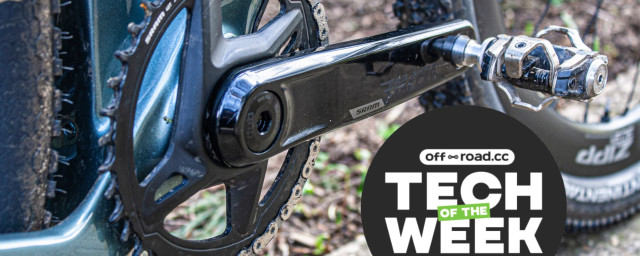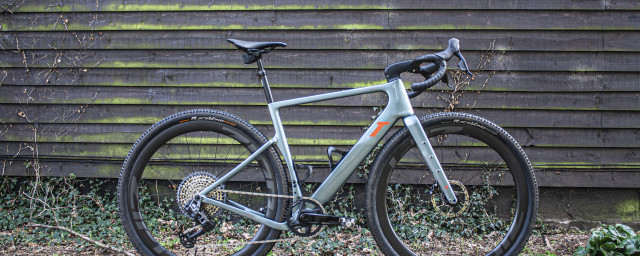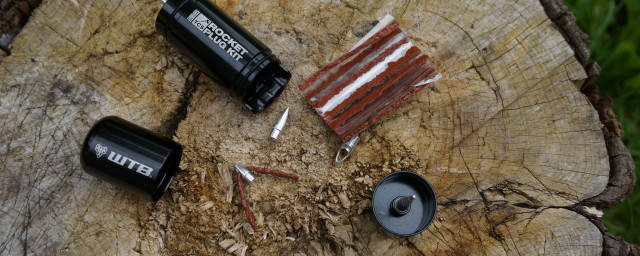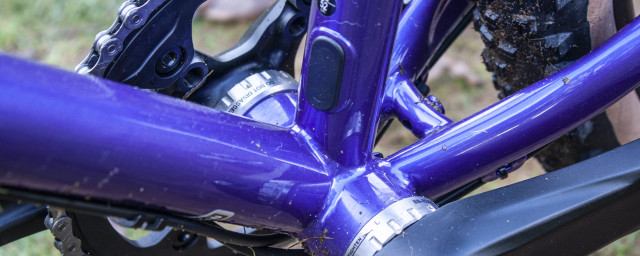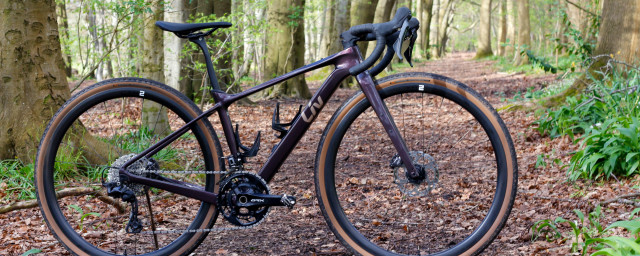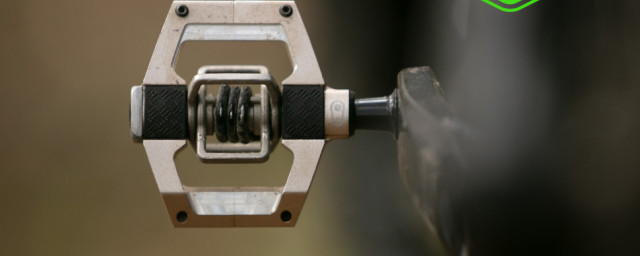The Ariel Elite is Saracen's answer to the aluminium aggressive enduro bike question and with 165mm of travel from a suspension design similar to the brand's downhill bike, the Myst, it screams gravity from top to bottom of the hill.
We’ve already had a ride on the 2018 Ariel at Revolution Bike Park earlier this year and were eager to get back aboard the enduro sled for some more action. The alloy version of the Ariel has been in our shed for a couple of months now and has seen plenty of trail time. Coming in at £3,300 the Ariel Elite is the cheaper version in the two horse line up, befitted with an alloy front triangle and a carbon swingarm.
The linkage driven single pivot suspension comes care of the brands downhill behemoth, the Myst and there is no mistaking it looking at the bike. Taking the chance to update a less than worthy platform Saracen updated the 2018 Ariel to use bearings throughout the carbon linkage rather than bushes as seen on last years’ bike with the main pivot bearing being a massive 37mm in diameter. Elsewhere, the frame features internal cable routing throughout, a boost set up, a threaded bottom bracket and if you spend the £5k for the full carbon frame you get an adjustable headset meaning you can adjust the reach by -5, 0 or +5mm, a nice addition but unfortunately not available on the alloy version of the bike.
Kit List
Our Ariel Elite came with 170mm Rockshox Yari’s, a Fox DPX2 shock, a 1x drivetrain comprising of good but not exceptionally shiny kit, a Shimano XT mech and smaller than we’d like SLX 11-46T cassette, reliable Shimano Deore M6000 brakes, Kore Realm 3.0 rims (30mm external width) and tough WTB Vigilante tyres which are unfortunately not the grippy compound version. Saracen’s use their own cable actuated dropper post and bikes will be sold with a 150mm dropper for the medium size and above. It’s a solid build, not the best value given the own brand dropper post and Deore brakes but not the worst either. A word on the brake, in my opinion, you are actually better off with the M6000 stoppers over the pricier SLX’s. Our test sets are currently exhibiting a bite point that moves when you least expect it, I’d opt for the Deore over SLX any day of the week.
The aggressive stance of the Ariel follows through with geometry to match, sporting a 65° head angle. Our medium bike has a pleasingly short seat tube of 400mm meaning riders can size up easily. The medium sported a rather average reach figure of 440mm coupled with an effective top tube of 613mm a long number but taking into account a relatively slack seat angle (74° ) that’s not a surprise. I'd like to see the seat tube steepened up a couple of degrees and then some length added to the front centre to create a longer reach, it'd make what is a capable bike even more stable and it would pedal better too.
Head tubes are short too, the medium bike has one of 95mm, meaning there was plenty of spacers used to get the desired bar height. The chainstays measure 435mm, it’s nice to see a brand not taking things too short in this department, giving the Ariel a good chance of having some climbing prowess. Lastly, it’s great to watch the wheelbase inching up towards bigger figures at 1198mm, this coupled with a relatively low bottom bracket (343mm) points the Ariel in the direction of a stable ride at speed.
Suspension snags
In setting up the Ariel I found I had to run the 170mm Rockshox Yari’s with about 20PSI more pressure than recommended to prevent the fork diving through its travel, I also left the single volume reducer supplied with the fork in place. With this set up the fork still ate up the small bump chatter and dealt with the big hits well too.
It was a similar story at the rear too the Fox DPX2 shock provides the Ariel with a super supple start to the stroke but the whole feeling is rather linear and lacks midstroke support, meaning the bike falls through its travel quickly. At larger volume reducer than the 0.6” already in the shock only serves to decrease the amount of travel available rather than increase the ramp up when nearing the end of the stroke. Running the bike with (less than recommended) 25% sag the bike still wallowed deep in its travel more often than not, especially when ridden hard. The designers at Saracen say the leverage ratio is reduced on the new Ariel, adopting a gently falling rate to compensate for ramp up at the end of the travel experienced with an air sprung shock. A ‘digressive’ compression damping rate produces linear, coil-like feel whilst soaking up the smalls bumps impeccably. It looks like they have got what they aimed for but it’s not to my tastes and leaves a bike that feels sluggish and wallowy.
The supple beginning of the stroke, with its sensitive feel coupled with the longer than average geometry make this bike into a downhill brawler. The rear wheel sticks to the ground giving plenty of traction wherever and whenever you want it, soaking up the small bumps leaving the rider with a plush ride however burly the terrain is that you take on. When hitting up bigger impacts though the Ariel falls deep into its travel with little ramp up at the end of the stroke. When the gravity stops the Fox DPX 2 shock felt unresponsive and lazy to pumping or other rider’s input. The shock has a medium tune and even running the shock as fast as it will go (no rebound damping applied) I felt it was only just fast enough for my preferences. Running the shock with more air meant it lost some of its sensitivity over the small bumps, although that did provide a little more mid stroke support. It would be interesting to see if the ability to dial in some high and low-speed compression damping as available on the Fox Float X2 Factory shock used on the more expensive carbon Ariel LT does a better job of handling the rear suspension kinematics.
Back to the ride, the sensitive rear end tracks the ground pretty well when climbing too, although heave up and over a large obstacle and the suspension will wallow again, leaving extra effort needed to keep the bike moving forward. On the subject of climbing, this Ariel doesn’t do a bad job, it's not the sprightliest but then it has got a slack (ish) 74° seat angle and bang on 33lbs (14.9kg) of weight to deal with. The chainstays and longer wheelbase of the bike make technical or steep climbing on this bike easier than it might otherwise have been.
Ride Summary
Whilst descending it’s easy to find the middle of this bike and stay there, it’s balanced, a real hoot to chuck into chunky terrain and wait for the suspension to smooth out the ride. It’s slack enough to make light work of steep trails with the length of the wheelbase making the bike feel stable at speeds. That same length doesn’t equate to a barge like feel either, centre your weight and this bike will goad you into slamming it into corners too, just lacking a ‘pop’ out of said corner, no doubt due to that liner suspension curve coupled a digressive damping rate and with being unable to dial off any more rebound damping.
If you really are after a mini downhill bike that eats chunder for breakfast, ploughs on like steam train over the rough stuff and climbs in a solid if not sprightly manner then the Ariel Elite will make an aggressive partner for the trail task in hand.
You might also like:
- Review - Genesis Core 30 hardtail
- Review - Transition Smuggler X01
- Try out the latest bike with us at our Demo Day





